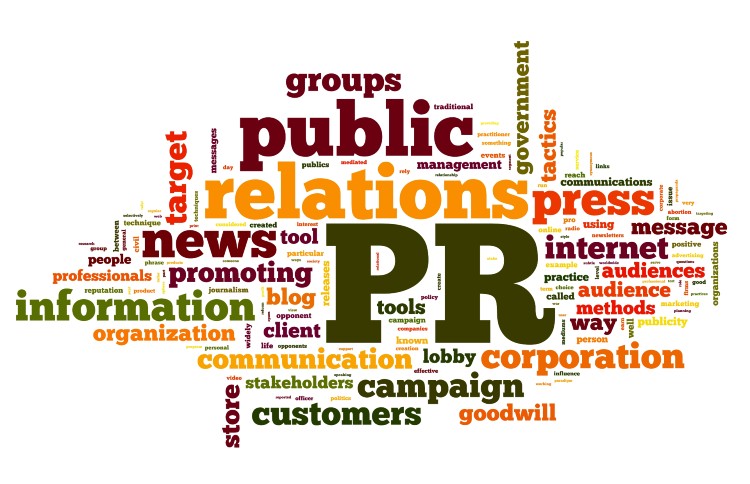Defining PR is a trick in itself. However, ask around, and the most frequent response would involve press releases and crisis management. Sure, both these are a part of PR. But what is PR?
PR involves strategic communications that help forge relationships between companies, their customers and prospects. Come to 2021, the meaning of PR has considerably changed. Do not fret, as you can avail yourself of expert help from a public relations agency to get through with it.
Let’s begin at the start.

Why is PR important?
Credibility
PR comes to the rescue when it comes to building credibility. This aspect is especially crucial for startups. PR helps put forth the brand narrative in the public eye. Additionally, this contributes to the digital footprint.
Awareness
PR also helps with raising awareness about your products, services and solutions. You can participate in media-led initiatives and have your offerings appear in professional reviews and promotions through guest appearances.
Social Proof
PR lets customers, investors and employees know that your brand and company is serious. Aspects such as thought leaders or professional affiliations such as accelerator programs help build social proof. These avenues are commonly known as earned media.
Enhanced search rankings
The explosion of internet connections, online presence and social media has put SEO at the forefront. PR helps garner earned media through online publications. And when this happens, it usually includes a backlink to the website.

What is PR in 2021?
Here are some PR trends that are making the rounds in the marketing industry.
Companies must focus on delivering authentic answers
Increasingly, shareholders and consumers are seeking authenticity, especially when it comes to crisis management and reactions. The move is to brush past an apology and display commitment management towards rectification of the catastrophe.
A reimagination of events
Today, PR is more about creativity and goes beyond the yesteryears of press releases and media coverage. A good starting point is to move away from in-person events to a virtual or hybrid model. Online events are advantageous and cater to audiences that are unable to attend the events. With open access, people can participate from anywhere. The challenge, however, lies in rethinking how to showcase the products and offerings to a vast audience. The move means embracing innovations and technology to provide the same educational experience as done onsite.
Collaboration with influencers
Influencers, affiliates or brand ambassadors, whatever may be the term, can be powerful and trusted voices for brands. The media relations funnel calls for effective communicators to come aboard and amplify their messages to the target audiences. PR professionals now have the added responsibility of rethinking their internal content presentation strategies. For one, employees can also be those trusted voices for the brand.
Tackling fake news
Disinformation and misinformation are everywhere and are at an all-time high. The onus lies on PR professionals to understand irrelevant information about their company and then clarify them.

PR for small businesses and startups
PR today can be segregated into two types – traditional and digital. Traditional PR includes the non-digital mediums of radio, television, newspapers and journalists, among others. Digital PR comprises blogs, podcasts, social media events, videos, guest blogging, and other forms of online content.
The magnificence of the internet is that it’s accessible to everyone. Startups can now jump on the bandwagon of leveraging digital PR techniques to build their digital footprints. A profound aspect is that digital PR comes with other benefits, including link-building using backlinks. What this does is that it makes for integration of SEO and Public Relations. This fuels quality referral (and word-of-mouth) traffic to get generated via click-throughs, which further propel the digital footprint through online comments and social media shares.
How PR has changed from the 2010s
The 2010s, the decade that just went by, saw the rapid rise of online multimedia content. Today, a decade later, online multimedia content dominates the PR wave. This trend is confirmed through statistics. In 2021, about 84 per cent of consumers regarded video as the telling factor for influencing a purchase. By 2022, about 82 per cent of B2B and B2C web traffic will stem from video.
Earned Media – the Core Output of PR
Earned media for PR includes any channel or medium of note and influence. It comprises any platform that involves editorial control by providing relevant information and content to the media’s target audience. Common examples include a newspaper article or professional reviews.
Earned media means nothing unless put into context. Nothing is set in stone, but professionals need to focus on combined marketing, communications and PR strategy. Below are the different media forms –
1. Shared Media – the shared media form includes retweets and link-sharing on social media. It helps forge relationships with media influencers.
2. Owned Media – the form of media is an excellent place for creating your content strategy. What is more, it helps leverage the narrative that you intend to build using earned media.
3. Paid Media – the media form is the dominion of marketing but is not part of a PR strategy.
What You Need to Know
The meaning of PR or Public relations has changed over the decades. With upcoming avenues such as Augmented Reality (AR), Virtual Reality (VR), the concept will undergo yet another stream of change. Nonetheless, PR will be prominent in delivering credibility, awareness and social proof to brands for years to come.


